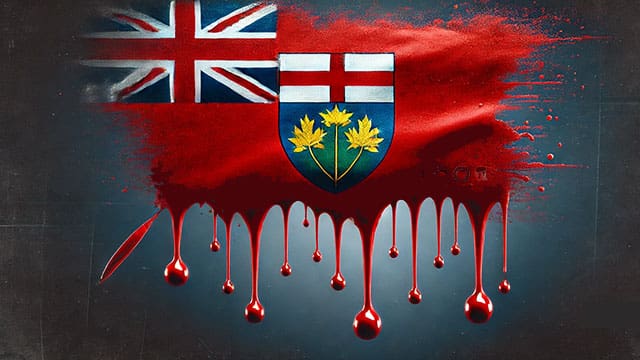Ontario is in a debt crisis. Voters must demand fiscal responsibility

For interview requests, click here
One billion dollars a month.
That’s how much Ontario taxpayers are spending on interest payments alone.
That money isn’t going to health care, roads or schools. It’s covering debt obligations, a growing cost that Ontarians cannot afford to overlook as they head to the polls.
With a provincial election set for Feb. 27, voters will soon decide who will lead the province and, more importantly, who will manage its finances.
Ontario already has the most indebted subnational government in the world. In the past two decades, it has balanced the budget just twice. During that time, borrowing costs have risen, and the province has taken on more debt. That debt now requires billions in annual interest payments—money that could otherwise fund public services.
 Ontario’s debt has topped $400 billion. |
| Recommended |
| Ford needs to end the debt and inflation cycle
|
| Doug Ford’s snap election serves no purpose
|
| You’d have to be crazy to go into politics
|
| KEEP AN EYE ON ONTARIO |
Every dollar spent servicing debt is a dollar that isn’t going toward frontline services. The more the province borrows, the greater the long-term strain on essential programs such as health care and infrastructure. The challenge for the next government will be balancing priorities while ensuring Ontario’s finances don’t spiral further out of control.
Successive governments of all political stripes have struggled to rein in spending. As borrowing costs climbed, so did Ontario’s reliance on debt to finance operations. The result is billions in interest payments each year—funds that could otherwise support essential services or tax relief.
Yet election campaigns tend to focus on promises rather than fiscal realities. Over the next few weeks, party leaders will unveil spending plans to win over voters. What’s often missing in these discussions is a clear strategy for funding new commitments without deepening the deficit.
If Ontario is to get its finances under control, two key steps are needed.
First, Ontario’s next government should commit to balancing the budget this spring.
In the fall economic update, the provincial government projected a $1.5-billion deficit for 2025-26, with a return to balance the following year. That deficit could easily be wiped out so long as the government doesn’t dip into its $1.5-billion contingency fund. The fiscal path to balance is there—it just requires discipline.
Ontario has done this before. In the mid-1990s, facing a severe fiscal crisis, the province made tough decisions to rein in spending and restore financial stability. More recently, in the late 2010s, the government brought the province close to balance before the COVID-19 pandemic derailed fiscal plans. While the pandemic necessitated emergency spending, Ontario now needs to return to sustainable budgeting.
Second, every dollar of new spending should be offset with a corresponding reduction elsewhere in the budget.
Ontario’s debt now exceeds $400 billion, far more than Quebec’s, which has a lower debt-to-GDP ratio despite historically running deficits. Even California, a state with a much larger economy, has managed to control its debt burden better than Ontario has over the past decade. If these jurisdictions can take meaningful steps to manage their finances, Ontario should be able to do the same.
Politicians often argue that deficits are necessary to fund critical public services. While that may be true in times of crisis, running long-term deficits without a plan to return to balance puts the province in a precarious position. Interest rates fluctuate, and if borrowing costs rise, Ontario’s ability to fund essential services could be compromised. Responsible budgeting isn’t about austerity. It’s about ensuring future governments can still afford to invest in what matters most.
Households manage their budgets by cutting back in one area to make room for new expenses. The provincial government should do the same. If a political party wants to introduce a new spending program, it should identify where the money will come from—whether through savings, efficiencies or reallocation of existing funds.
This election will decide Ontario’s financial future. Without responsible policies, debt will keep rising—leaving the next generation to pay the price.
Political leaders will be tempted to make ambitious promises in the coming weeks. But beyond the headlines, Ontarians must ask a critical question: How will it be paid for?
Jay Goldberg is the former Ontario Director of the Canadian Taxpayers Federation.
Explore more on Ontario politics, Ford government, Ontario debt and deficit
Troy Media is dedicated to empowering Canadian community news outlets by providing independent, insightful analysis and commentary. Our mission is to support local media in fostering an informed and engaged public by delivering reliable content that strengthens community connections, enriches national conversations, and helps Canadians better understand one another.
